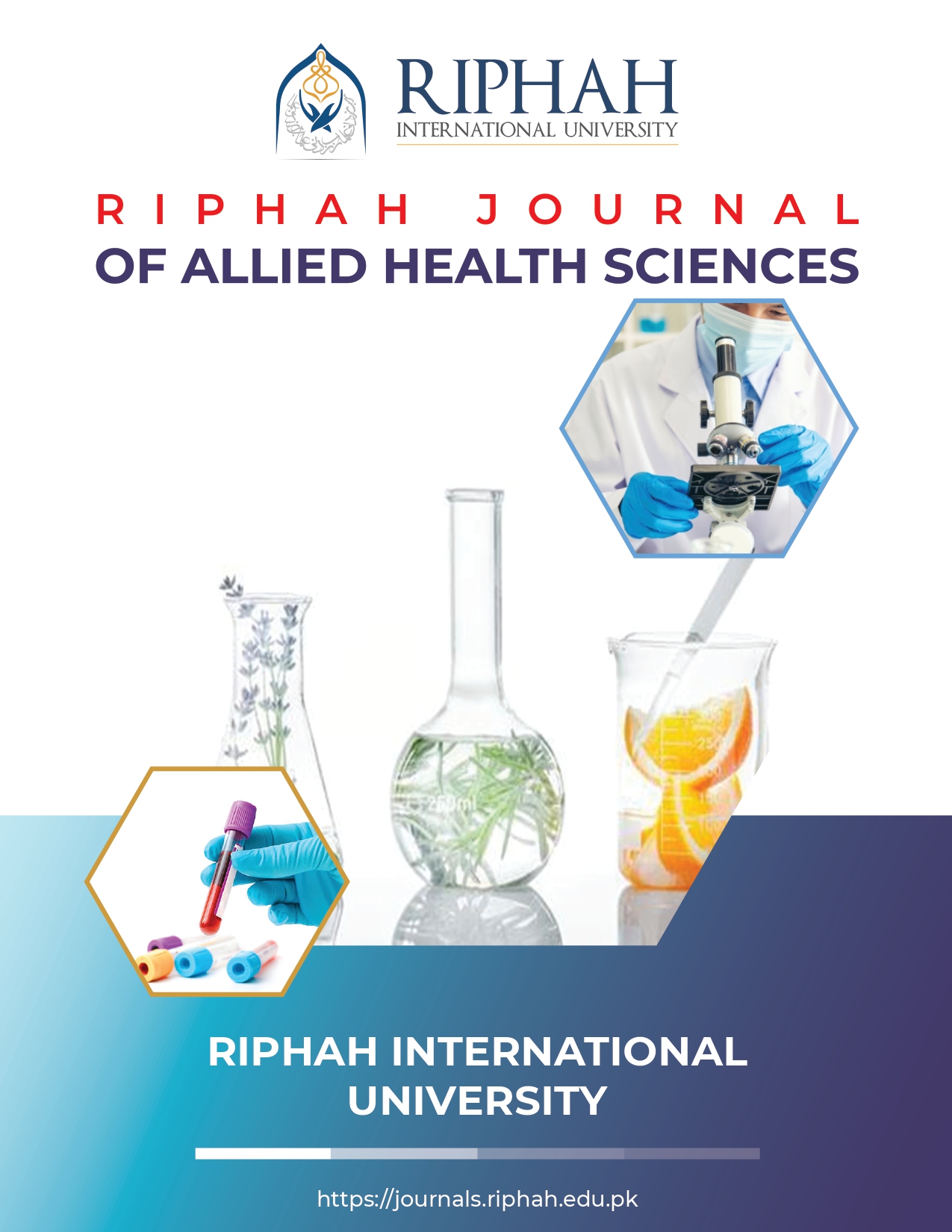Prevalence of Multi Drug Resistant Pseudomonas aeruginosa
Keywords:
Pseudomonas aeruginosa, multiple drug-resistant, antibacterial resistanceAbstract
Background: The increasing prevalence of multiple drug-resistant (MDR) bacterial infections is a serious concern for global health. Pseudomonas aeruginosa, a common pathogen, has been linked to various nosocomial infections associated. Objective: The current study is designed to find out the prevalence of multidrug-resistant Pseudomonas aeruginosa.
Methodology: Clinical isolates of P. aeruginosa were obtained from 3 different hospitals in Islamabad as well as Rawalpindi, Pakistan in 2016 and 2017. In this study, various secretions, including ascetic fluid, aspiration fluid, bronchial secretion, bronchial washing, and abscess, were collected from patients belonging to different age groups. Samples were processed to isolate bacterial colonies that were identified through biochemical characterization. Isolated strains of Pseudomonas aeruginosa were evaluated through antibiotic susceptibility testing by the Kirby-Bauer disc diffusion method.
Results: A total number of 52 samples were processed, followed by the isolation and identification of Pseudomonas aeruginosa. The maximum number of samples were collected from patients belonging to the 61-70 years old age group, and female patients (55.76%) were higher in frequency than male patients (44.23%). The majority of Pseudomonas aeruginosa isolates displayed resistance against Amikacin, Tobramycin, and Piperacillin.
Conclusion: The prevalence of MDR P. aeruginosa is a serious healthcare problem. Available antibiotics are not useful against them. Therefore, there is an urgent need for new and improved drugs with minimized costs and toxic effects that can maximize healthcare benefits.


